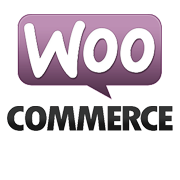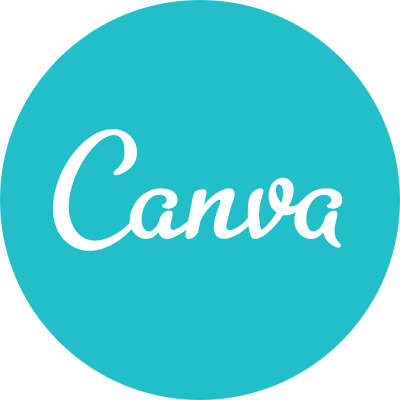Setting Off On Our Own In NYC, Running A $3K/Month Digital Agency
Hello! Who are you and what business did you start?
Hi, we’re DKDesigns, a web design agency in Brooklyn, NY. Founded by David and Kaitlyn Gilbert out of New York City, we are a one-stop-shop for web design and digital marketing for small businesses in Brooklyn, NY.
In a city where the average web design package usually soars beyond the $10,000 range, we decided to serve the small (but mighty) businesses in New York City by offering corporate quality digital marketing services at prices mom-and-pop businesses could stomach.
What started as a side project with a goal of $10K a year and $1K has grown faster than we’ve been able to keep up in our first year, passing our $10K annual revenue goal in the first quarter and closing in on $3K in monthly revenue.
What's your backstory and how did you come up with the idea?
We love New York City. Kaitlyn was born and raised in Brooklyn, and David joined her as fast as he could. While there are many things that make Brooklyn great, the thing we enjoy about it the most is the vibrance and variety of small businesses we find scattered throughout our borough.
Whether it’s a resilient local bookstore that still perseveres against the onslaught of a digital age, or a new Carribean-Spanish fusion restaurant opened by an immigrant family, the true grit and character of Brooklyn resides in its small businesses.
Once we honed in on the deeper reasons and ways we wanted to run our business, the logistical necessities went smoother.
However, if there’s something else New York City is known for, it’s its competitive nature. People don’t come here to play nice. And doing business in the city can feel like a game of Battleship where multimillion-dollar corporations are all too quick to blow the little guys out of the water — especially when they’re wielding marketing budgets that dwarf a small business’s annual revenue.
After a decade of fueling the corporate beast, we began to chart our exit while dual-wielding multiple freelance hustles. It was when a local counseling center approached Kaitlyn about a website that also needed copywriting that we began to realize we possessed a joint skillset that met practically every need small businesses brought to the table when they needed a website. We toyed with the idea for about a month.
But it wasn’t until a local author came to us wanting a website, copywriting, social media marketing, a newsletter, and a blog that we began to believe. We looked at his list of needs and realized that, thanks to our backgrounds in the corporate world, we had the skillset the faithfully and efficiently meet every request.
As we saw that author’s influence and audience grow through the website we designed for him and the social media account we managed for him, we began to believe, and DKDesigns was born.

Take us through the process of building the first version of your product.
Designing our first website felt like jumping into a cold pool. We knew we had the skills to execute the project, technically. But there was still a ton of anticipation around actually jumping into the fray. Nevertheless, when we approached a budding author who needed a website for his book about us handling it for him, he agreed. We soon had our first contract in the books, and thus began our journey.
We learned quickly that, when running a design agency, having good project flow, communication, and tools to execute it was key. We learned that over-communicating with a client is better than under-communicating, setting firm timelines and expectations was a must, and having the right software and tools to facilitate those exchanges made the process ten times easier.
We quickly set up a G Suite so we could have reliable email servers song with shared Drive storage to handle the exchange of files. We set up an account on Wave so we could electronically invoice our clients. And above all, we got ourselves registered as a Sole Proprietorship in Brooklyn so that we could legally and ethically operate under our business name.

Describe the process of launching the business.
Most of us expect launching a business to be a lot of legal and financial red tape, but the first hurdle, for us, was the psychological one. In New York City you become accustomed to living off the big man. You’re well-being, your vacations, and your retirement, all get wrapped up in whether or not big companies are thriving.
Because of this, setting off on our own, was a big change of life framework, and it wasn’t until we realized we had the same skillset and could produce the same services that were making bigger companies millions of dollars, that we began to believe we had what it takes.
But for us, the mission couldn’t just be to make ourselves millions of dollars instead of a large company. We were also driven by a desire to steward our business as an instrument of good and honorable cultivation in our community and not just a tool of self-promotion. That’s what inspired us to focus on equipping and elevating smaller businesses instead of just trying to copy and paste what we were doing in the corporate world.
Once we honed in on the deeper reasons and ways we wanted to run our business, the logistical necessities went smoother. We had a deeper why driving us to get through the red tape. We got our name registered, bought domains, set up email, dipped into savings, and began to spread the word about what we were building, and from there, things began to grow.
Since launch, what has worked to attract and retain customers?
The number one question each web design agency asks itself is “How do we get more clients?” And while it’s a question we also ask often, we hardly have time to answer it because somehow new clients keep finding us. We’ve reflected on our client sources and can narrow down the top 3 to the following:
- Word of Mouth
- Search Results
- Referrals
While everyone hears that word of mouth is the most common way new clients come, we found that we had to be intentional about leveraging it. We didn’t just let people know on social media we were designing websites for small businesses. Instead, we built a pitch deck and sent it to friends, family, and colleagues who spend time in or around small businesses just to let them know we were available if they noticed any needs we could fill.
When it came to search, we utilized a less common tactic that most web design agencies don’t use — we made a Google Business profile. While this may seem frivolous to fully remote businesses like a web agency, we realized that many clients feel better about working with web designers and marketers who reside in and know their area.
This means Google Maps heavily influences them in their search for a provider. We set our profile up, added some portfolio pieces, and sure enough a local business called us needed three websites.
And finally, we set up a referral system. This is different than simple word of mouth because it rewards a past client for referring us to a future client. A majority of our clients stay on for some sort of recurring service, usually web hosting or social media management.
As a result, we decided to offer two months free on hosting or a discount on recurring services when they referred us to a friend who signed up with us. Communicating and encouraging these referrals has helped us stay connected with past clients while being pointed toward new clients as well.
Don’t allow perfection to prevent you from being good enough. If you can meet one client's needs, you can meet another’s.
How are you doing today and what does the future look like?
The thing that surprised us the most in our first year of running the business was just how well it was gone. We expected it to be hard, and it has been, but we didn’t expect it to prosper and profit the way it has.
We launched the business to work on it part-time and on the side. 6 months in we had to transition to ¾ time and expect to be working on it near full time by next year.
As mentioned before, we started with modest goals akin to any side hustle. We thought it’d be helpful if the business could give us an extra $10K a year with a couple hundred dollars of additional monthly revenue sprinkled in. We ended up surpassing our annual goal in the first quarter and our monthly goal in the 2nd quarter.
And if things hold steady, we’ll likely end up generating around $30K in revenue this year, far beyond what we’d hoped to accomplish when this set out as a side hustle project.
It has made us think and seriously reflect on the fact that, in the 21st-century gig culture, we’re often all too eager to settle for side hustles when there could be a much larger dream possible if we’re willing to let it materialize and go for it.
Through starting the business, have you learned anything particularly helpful or advantageous?
We are constantly learning through this process, and that’s probably one of our favorite parts. We’re learning about ourselves, we’re learning about people, and we’re learning about our business and where it fits on the competitive spectrum.
Something one of our mentors told us early on is that people choose a business for one of three factors: 1) it’s more affordable than the others, 2) it’s got a higher quality than others, and 3) it’s unique. As we’ve reflected, our selling point in the first year of business has likely been #1. We’ve offered our services affordably to get attention and grow our client base.
But the longer we work the more we realize, we don’t just do our work at an affordable cost, we do it pretty darn well too. This encourages us to rethink our pricing model and to continue to find that sweet spot of being affordable to small businesses but still reflective of the quality we offer.
We’ve also learned to stay humble but still be courageous. When a client approaches us about a project or feature that’s out of our usual scope or expertise. We want to be courageous enough to take it on and not shy away from a challenge, but humble enough to seek advice, tools, and knowledge from others in the business.

What platform/tools do you use for your business?
We learned early on that digital agencies can live and die by the third-party software and tools they utilize. But at the same time, they can also overpay for tools that do things they could have just learned to do themselves. Here are our top five tools in our belts:
- WordPress - We design all of our sites customly on WordPress. Even in an age where site builders like Wix and Squarespace get the hype. WordPress still allows us to build faster sites that perform better on SEO and allow for the integration of additional features that others don’t have.
- G Suite - helps us with a professional email and shared storage across our team.
- Wave - Allows us to set up electronic invoices as well as recurring payments for our clients.
- AirTable - This is what we use to schedule, map out, and review social media content at a birds-eye level.
- Canva - the mighty mighty Canva. This tool helps us with everything from video editing to building simple website graphics. We even used it once to remove the background from 50+ different cake photos to use on a bakers website.
What have been the most influential books, podcasts, or other resources?
To stay inspired we do a few things. First, we keep coming back to Starter Story to remember we’re not alone in the process.
Second, we have a mentor who is an author and runs his pizzeria. He has tons of wisdom after working with people and running a business for decades.
Third, we’ve honed in on just a couple of YouTubers who seem to operate from a very sincere place in terms of the content and help the render through their channel, as opposed to just producing fluff to try to grow a following. Web Squadron is one.
Advice for other entrepreneurs who want to get started or are just starting out?
To other entrepreneurs I’d say, just start. Don’t allow perfection to prevent you from being good enough. If you can meet one client's needs, you can meet another’s. Someone once told me, “If you work your ass off for your first few clients, and do good work for them. They will tell others about you.” And this has been only too true.
A fun fact about us. We actually designed websites for around 8 other clients before we even had a website of our own (we used a Canva flip deck to pitch our services to clients before that). Designing our own website was actually the worst part. So don’t get hung up on your own image and neglect doing the work you’re called to do.
Where can we go to learn more?
If you have any questions or comments, drop a comment below!

Download the report and join our email newsletter packed with business ideas and money-making opportunities, backed by real-life case studies.

Download the report and join our email newsletter packed with business ideas and money-making opportunities, backed by real-life case studies.

Download the report and join our email newsletter packed with business ideas and money-making opportunities, backed by real-life case studies.

Download the report and join our email newsletter packed with business ideas and money-making opportunities, backed by real-life case studies.

Download the report and join our email newsletter packed with business ideas and money-making opportunities, backed by real-life case studies.

Download the report and join our email newsletter packed with business ideas and money-making opportunities, backed by real-life case studies.

Download the report and join our email newsletter packed with business ideas and money-making opportunities, backed by real-life case studies.

Download the report and join our email newsletter packed with business ideas and money-making opportunities, backed by real-life case studies.


















